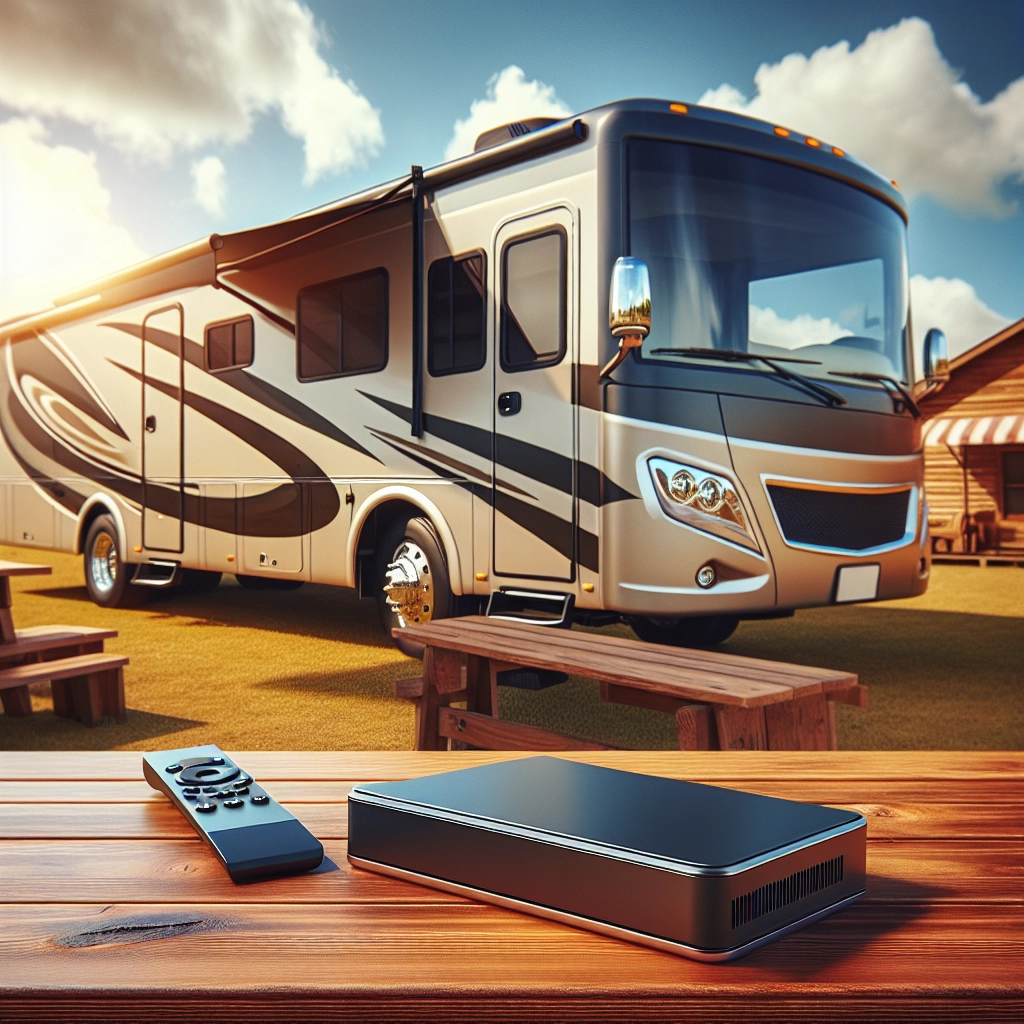Table of Contents

Essential Guide to RV Solar Battery Outputs
When the open road calls, and the spirit of adventure stirs within, the last thing you want to worry about is power. That’s where solar batteries come into play, serving as the heart of your RV’s energy system. In this guide, we’ll walk through the ins and outs of RV solar batteries, focusing on output considerations that ensure you have reliable power wherever your journey takes you.
Your Solar Journey Begins Here
Imagine a camping trip where your only concern is how much fun you can pack into each day. No searching for hookups, no generator noise—just you, your RV, and the peaceful serenity of nature. Solar power makes this dream a reality, but it all starts with understanding the output of your RV solar batteries. It’s not just about having power; it’s about having enough power to meet your needs without a second thought.
Powering Your Adventures: Choosing the Right Solar Battery
Selecting the right solar battery for your RV isn’t just a good move—it’s a game-changer. The right battery means less stress about energy and more focus on the experiences that matter. We’ll help you pinpoint the perfect match for your system, factoring in your energy usage, travel habits, and the unique demands of life on the road.
Decoding Battery Types for Optimal Solar Harvesting
Not all batteries are created equal, especially when it comes to harnessing the sun’s power. From the rugged durability of Lead-Acid to the impressive efficiency of Lithium-Ion, each type has its strengths. We’ll break down the jargon and help you understand which battery not only fits your RV but also aligns with your solar aspirations.
- Lead-Acid Batteries: The traditional choice, known for their affordability and availability.
- AGM Batteries: A step up, offering better durability and maintenance-free operation.
- Gel Batteries: Similar to AGM, with added benefits for deep discharge applications.
- Lithium-Ion Batteries: The modern pick, boasting high efficiency and a longer lifespan.
Navigating Capacity and Power Demands
Understanding battery capacity is crucial to meeting your RV’s power demands. Think of capacity like a water tank—the larger it is, the more water (or energy) you can store. We’ll guide you through calculating your energy needs so you can choose a battery that won’t leave you high and dry when you’re miles from the nearest power outlet.
Here’s a simple way to look at it:
- Start by listing all the devices you use in your RV.
- Calculate the total wattage you’ll need per day.
- Consider how many days you want to go off-grid.
- Choose a battery with a capacity that exceeds your calculated needs.
By understanding your power usage and having the right battery capacity, you’re setting the stage for countless worry-free adventures under the sun.

Delving into RV Solar Battery Performance
Performance isn’t just a number on a spec sheet; it’s about how your RV solar battery holds up in the real world. Factors like temperature, age, and charging habits all play a role in how well your battery performs. We’ll explore what performance really means and how to keep your solar batteries running at their best, so you can enjoy uninterrupted power day after day.
Understanding Battery Efficiency and Real-World Output
Battery efficiency is the secret sauce to getting the most out of your solar setup. It’s not just about how much energy your battery can store; it’s about how much of that stored energy actually makes it to your devices. We’ll help you uncover the truth behind efficiency ratings and how to interpret them, ensuring you get a battery that delivers power as promised.
- Look for batteries with a high depth of discharge (DoD) for more usable energy.
- Consider the round-trip efficiency to understand how much energy is lost during charging and discharging.
- Check the battery’s temperature coefficient to gauge performance in various climates.
- Remember that real-world conditions can differ from laboratory tests.
By grasping these concepts, you’ll be equipped to select a battery that won’t let you down when it counts.
Matching Solar Battery Outputs to Your RV’s Energy Needs
It’s a balancing act: too little battery power, and you’re left in the dark; too much, and you’re carrying dead weight. The key is to find that sweet spot where your solar battery’s output matches your energy consumption. We’ll guide you through tailoring your solar battery choice to your lifestyle, ensuring you have just the right amount of power for your needs.
- Analyze your typical energy usage, considering both peak and average demands.
- Factor in the inefficiencies of real-world conditions.
- Plan for future upgrades or additional devices that may increase your energy needs.
With a well-matched battery, you’ll have the confidence to power through your adventures without a second thought about your energy reserves.
Realizing the Potential of Your Solar Investment
Investing in solar power for your RV is a smart move, but it’s only as good as the return it provides. That’s why it’s crucial to not only choose the right components but also to use them effectively. We’ll share insights on how to get the most out of your solar investment, ensuring that every ray of sunshine is captured and converted into valuable energy for your RV.
Strategies for Maximizing Battery Output
Maximizing your solar battery’s output isn’t magic—it’s about smart strategies and best practices. We’ll reveal proven tactics to help you squeeze every last drop of power from your batteries. From optimizing charge cycles to reducing phantom loads, these strategies are your ticket to a solar-powered lifestyle that’s both efficient and sustainable.
- Regularly clean and maintain your solar panels for maximum efficiency.
- Use energy-saving appliances and LED lighting to reduce your power draw.
- Implement smart charging practices to extend battery life and improve performance.
- Monitor your energy usage with a reliable battery management system (BMS).
By adopting these strategies, you’ll ensure that your solar investment pays dividends in energy independence and peace of mind on the road.
Adapting to Changing Power Requirements on the Go
As you travel, your power needs can shift like the landscapes you explore. One day you’re just powering a fridge and lights, the next you’re charging laptops, cameras, and more. The key to adapting is flexibility in your solar power system. Upgrading your setup with additional panels or a more robust battery can keep you powered up, no matter what the road throws your way.
- Invest in a scalable solar system that allows for easy expansion.
- Consider portable solar panels for an on-demand power boost.
- Stay informed about the latest solar technology that can offer higher outputs in smaller packages.
- Adjust your energy consumption habits based on your daily power generation and storage.
Being prepared for these changes means you’ll always have enough juice for your journey, without skipping a beat.

Ensuring Compatibility and Longevity
The right solar battery can be a long-term travel companion for your RV adventures. Ensuring compatibility with your RV’s existing system and planning for longevity are crucial steps in the process. This involves understanding the technical specifications of your RV and solar components, as well as the environmental factors that can affect battery life.
Connecting Your Solar Battery with Confidence
When it’s time to connect your solar battery, the details matter. Making sure it’s compatible with your solar panels, charge controller, and inverter is essential. It’s like fitting a piece to a puzzle—it has to be just right. You’ll want to ensure the voltage, amperage, and charge profiles match up to avoid any power mishaps. A well-matched system runs smoothly, giving you peace of mind as you soak up the sun.
- Double-check the voltage requirements of your battery and solar components.
- Match the battery’s charge rate with your controller’s output.
- Ensure your inverter can handle the power draw from your battery bank.
With a confident connection, your solar system will be efficient, safe, and ready for the long haul.
Maintenance Tips for Sustained Battery Health
Just like your RV needs regular tune-ups, your solar batteries thrive with a bit of TLC. Keeping them clean, ensuring they’re charged properly, and avoiding deep discharges can extend their lifespan significantly. Think of it as preventative care for your solar power system—it’s all about keeping things running without a hitch.
- Regularly clean battery terminals to prevent corrosion.
- Keep your batteries at a consistent charge level to avoid stress.
- Check the electrolyte levels in lead-acid batteries and top up as necessary.
- Perform routine checks with a multimeter to monitor battery health.
By following these maintenance tips, you’ll ensure your solar batteries remain in top condition, ready to power your next adventure.
Key Takeaways: Efficient Solar Power Management
Managing your RV’s solar power efficiently is all about knowing your needs, choosing the right components, and keeping them in great shape. Here’s what you need to remember:
- Understand your power requirements and plan your solar battery capacity accordingly.
- Choose a battery type that fits your travel style and efficiency needs.
- Stay flexible and ready to adapt your solar system to changing power needs.
- Ensure all solar components are compatible for a seamless and safe energy system.
- Maintain your batteries regularly to prolong their life and performance.
Armed with this knowledge, you’re set to enjoy the freedom and independence that solar power brings to your RV lifestyle. So go ahead, chase the horizon and let the sun power your adventures.
Frequently Asked Questions (FAQ)
How Do I Calculate the Necessary Output for My RV Solar Battery?
Calculating the necessary output for your RV solar battery is simpler than you might think. Start by listing all the electronic devices you use in your RV and note down how many watts each one uses. Add up these wattages to find your total power consumption. Next, think about how many hours a day you use each device. Multiply the wattage by the hours of use, and you’ve got your daily wattage requirement. Remember, it’s always better to overestimate a little to ensure you don’t run short on power.
– List all electronic devices and their wattage.
– Multiply each device’s wattage by hours of use per day.
– Add up the daily wattage for all devices to get your total daily consumption.
– Factor in inefficiencies and energy loss to ensure a buffer.
With this total, you can determine the size of the solar battery needed to meet your energy needs, ensuring you have enough power for your daily activities.
Can High Temperatures Affect My RV Solar Battery Output?
Absolutely, high temperatures can have a significant impact on your RV solar battery’s output. Heat can accelerate chemical reactions in batteries, potentially leading to overcharging and reduced lifespan. Most batteries have a temperature coefficient, which tells you how output is affected by temperature changes. It’s important to keep your batteries cool and well-ventilated to prevent heat buildup and maintain optimal performance.
– Excessive heat can reduce battery efficiency and lifespan.
– Check the battery’s temperature coefficient to understand heat impact.
– Ensure proper ventilation and shading to keep batteries cool.
By managing the temperature of your solar batteries, you can maintain a steady and reliable power output, even on the hottest days.
What Are the Signs That I Need to Upgrade My RV Solar Battery?
Knowing when to upgrade your RV solar battery is key to uninterrupted power. Look out for signs like a noticeable drop in capacity, where your battery runs out of juice faster than it used to, or if it takes longer to charge. If you’re adding more appliances or find that your current setup can’t keep up with your power needs, it’s time to consider an upgrade. Also, if your battery is showing signs of physical wear, such as bulging or leaking, it’s a clear signal to replace it.
– Reduced capacity and longer charge times.
– Increased power needs due to additional appliances.
– Physical wear like bulging, corrosion, or leaks.
Stay ahead of the game by monitoring these signs and planning for an upgrade before you’re left in the dark.
How Often Should I Check My RV Solar Battery’s Performance?
Regular check-ups are crucial for keeping your RV solar battery in top shape. I recommend checking your battery’s performance at least once a month. Look at the charging and discharging rates, check for any signs of corrosion or damage, and ensure the connections are tight and clean. Use a multimeter to test the voltage and state of charge. If you’re a full-time RVer, consider checking more frequently, as daily use can lead to quicker wear and tear.
– Perform monthly checks on your battery’s performance.
– Inspect for corrosion, damage, and ensure clean, tight connections.
– Use a multimeter to test voltage and state of charge.
– Full-timers should check more frequently due to increased usage.
Staying on top of your battery’s health will help you catch potential issues early and keep your solar system running smoothly.
Is It Possible to Have Too Much Battery Output for My RV?
While it may seem like more power is always better, there’s such a thing as too much of a good thing when it comes to RV solar batteries. Oversizing your battery bank can lead to inefficiencies, such as underutilization of the batteries, which can shorten their lifespan due to lack of regular cycling. Moreover, it means carrying unnecessary weight and potentially wasting valuable space in your RV. The goal is to find a balance that gives you enough power to meet your needs with a little extra for peace of mind, without going overboard.
Excess battery capacity can lead to underutilization and reduced lifespan.
– Consider the weight and space limitations of your RV.
– Balance your power needs with the practicality of your living space.
– Plan for a buffer in power capacity, but avoid excessive oversizing.
By carefully sizing your battery output to your actual needs, you ensure efficiency, longevity, and a better overall solar experience.
In conclusion, embarking on a solar-powered RV journey is a rewarding venture that brings freedom and sustainability to your travels. As we’ve explored, choosing the right solar battery and understanding its output considerations are critical to a successful solar setup. From decoding the different battery types to navigating capacity and power demands, the journey requires a thoughtful approach to harness the sun’s energy effectively.
- Boondocking RVs: Flexible Solar Solutions – 3 March 2024
- Renewable Energy Tips for Full-Time Boondocking RVers – 2 March 2024
- Boondocking Solar Power Systems: Sizing Options & Solutions for Motorhomes – 1 March 2024
